Top 50 Cities for Global Trade
INTRO
It was American poet Walt Whitman who said, “A great city is that which has the greatest men and women.” We couldn’t agree more. It’s the people–their attitudes, convictions, work ethic and culture–that make each city unique. And just as great men and women have varying personalities and “drivers,” so do our nation’s cities. Some people are destined to be entrepreneurial, and so are some cities. Does one create the other? It’s not important–they seem to find one another. That’s the case with our pick for this year’s Most Entrepreneurial City for Global Trade, Charlotte, North Carolina.
Our special report on the Top 50 Cities for Global Trade is really two rankings in one. The overall ranking lists the 50 largest metropolitan areas by export volume. Lest that seem a tad stiff, we offer a second set of superlative rankings selected by the editors at Global Trade. These appear in the same order of their export contributions, but have a special call-out for their designated superlative.
For those cities not listed in the Top 50, your contribution is in no way diminished. Global trade takes all of us–in cities large and small–doing our best and making products that the world wants. Exporting is a very exciting endeavor that cannot only be very lucrative, it also has the added value of helping our nation earn much needed foreign exchange.
With this in mind, thank you for doing your part to help make your company strong and America a great exporting nation. And now, without further ado, enjoy the Top 50 Cities for Global Trade.
1. New York, New York
New York-Northern New Jersey-Long Island, NY-NJ-PA
$85.1 billion | Canada, China, Japan | Misc. Manufactured Commodities, Chemicals, Computer
The Big Apple’s Mayor Michael Bloomberg captured the world’s epicenter of finance, communication and culture’s essence: “If you want to start a business, create a new product or have a big idea, New York City is the place to be.” Its eye-popping numbers include 12 million tons of sea cargo, $16.1 billion in miscellaneous manufactured commodities, chemicals at $14.4 billion, and $6.6 billion worth of computers and electronics. The “miscellaneous” category includes NYC’s third-largest manufacturing sector, $4 billion worth of “bling”–diamonds headed overseas. To avoid sensory overload on NYC’s smorgasbord of attractions, try Lower Manhattan’s Ground Zero Memorial and the Customs House, home to the Indian Museum and NYC’s bankruptcy court. And remember our Super Bowl champs. Go Big Blue! –Marlene Piturro
2. Houston, Texas
Houston-Sugar Land-Baytown, TX
$80.6 billion | Mexico, Canada, China | Chemicals, Petroleum and Coal Products, Machinery
Houston ranks ahead of Los Angeles and a mere $5 billion behind New York, despite having half and one-third the populations, respectively. True, this little global engine that could is powered by a lot of big boy industries and companies—Houston, we have a Halliburton—but its consistent ranking as a top city not only for doing business, but also in which to work and live, must lend to its success. –Steve Lowery
Best Proximity to Universities
3. Los Angeles, California
Los Angeles-Long Beach-Santa Ana, CA
$62.2 billion | Mexico, Canada, China | Computer & Electronic Products, Transportation Equipment, Misc. Manufactured Commodities
 Think of L.A. and what comes to mind? Disneyland, Dodger baseball, Rodeo Drive and beach volleyball, right? And if you added the University of Souther California (USC) and the University of California at Los Angeles (UCLA), you hit the mark. The Los Angeles metropolitan area boasts no less than a staggering 73 universities and colleges, making it our hands-down choice for Best Proximity to Universities. What has that to do with advancing global trade? In a word: inspiration. If we want trade to grow, we have to inspire the next generation of young tai-pans, and that is precisely what universities are doing these days. Take USC for example. They pay scant attention to the legacy applicants of their alumni, yet they scour the world for international students. Across town at Loyola Marymount University, students have their choice of study-abroad internships at foreign locales as diverse as Honduras, Ghana, Auckland or Bonn. Colleges are immersing students into global cultures and orienting them toward international careers. And nowhere is this being played out more than in the greater L.A. metro area. –Drew Lawler
Think of L.A. and what comes to mind? Disneyland, Dodger baseball, Rodeo Drive and beach volleyball, right? And if you added the University of Souther California (USC) and the University of California at Los Angeles (UCLA), you hit the mark. The Los Angeles metropolitan area boasts no less than a staggering 73 universities and colleges, making it our hands-down choice for Best Proximity to Universities. What has that to do with advancing global trade? In a word: inspiration. If we want trade to grow, we have to inspire the next generation of young tai-pans, and that is precisely what universities are doing these days. Take USC for example. They pay scant attention to the legacy applicants of their alumni, yet they scour the world for international students. Across town at Loyola Marymount University, students have their choice of study-abroad internships at foreign locales as diverse as Honduras, Ghana, Auckland or Bonn. Colleges are immersing students into global cultures and orienting them toward international careers. And nowhere is this being played out more than in the greater L.A. metro area. –Drew Lawler
Most Improved
4. Detroit, Michigan
Detroit-Warren-Livonia, MI
$44 billion | Mexico, Canada, Saudi Arabia | Transportation Equipment, Machinery, Computer and Electronic Products
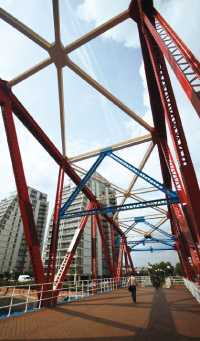 The International Trade Administration’s report on the highest-volume exporters by metropolitan areas showed that Detroit exports exploded by 55 percent during 2009 and 2010, the best growth rate in the country according to the most recent data available. Detroit sends a whopping 71 percent of its exports to North America Free Trade Agreement (NAFTA) countries, and—as expected—transportation equipment topped the list of the city’s exports, with $28.8 billion, or 66 percent of its $44 billion total export volume. The second spot was claimed by machinery with 9 percent. Respectable, but a footnote by comparison. Three of Michigan’s 20 Fortune 500 companies hail from Detroit, with General Motors ranking highest at the fifth spot on the prestigious list. Livonia adds another with TRW Automotive Holdings, which surely lends to the high percentage of the area’s auto exports. It’s also interesting to note that, despite being able to hit Canada with a stick thrown from Detroit, Mexico stands as Detroit’s leading export market, outpacing our northern neighbors by about $700 million. –Patrick Dooley
The International Trade Administration’s report on the highest-volume exporters by metropolitan areas showed that Detroit exports exploded by 55 percent during 2009 and 2010, the best growth rate in the country according to the most recent data available. Detroit sends a whopping 71 percent of its exports to North America Free Trade Agreement (NAFTA) countries, and—as expected—transportation equipment topped the list of the city’s exports, with $28.8 billion, or 66 percent of its $44 billion total export volume. The second spot was claimed by machinery with 9 percent. Respectable, but a footnote by comparison. Three of Michigan’s 20 Fortune 500 companies hail from Detroit, with General Motors ranking highest at the fifth spot on the prestigious list. Livonia adds another with TRW Automotive Holdings, which surely lends to the high percentage of the area’s auto exports. It’s also interesting to note that, despite being able to hit Canada with a stick thrown from Detroit, Mexico stands as Detroit’s leading export market, outpacing our northern neighbors by about $700 million. –Patrick Dooley
5. Miami, Florida
Miami-Fort Lauderdale-Pompano Beach, FL
$35.9 billion | Venezuela, Brazil, Colombia | Computer and Electronic Products, Transportation Equipment, Machinery
The Magic City’s global deal-making is helped by the fact that its metro area is home to the largest concentration of international banks in the United States. Not surprisingly, Miami is categorized as an “Alpha” or “Global City” and considered a critical cog in the world economy. Much of the area’s trade is done with Central and South America as well as the Caribbean, which seems only fitting since Miami’s diverse population has earned it the nickname “Capital of Latin America.” –Steve Lowery
6. Seattle, Washington
Seattle-Tacoma-Bellevue, WA
$35.4 billion | China, Japan, Canada | Computer and Electronic Products; Fishing, Hunting, Trapping; Misc. Manufactured Commodities
Being one day closer to Asia than other U.S. ports and sending air cargo via polar route have fueled metro Seattle’s $35.4 billion export boom. It scores big with Asian traders: $5.2 billion went to China, $3.6 billion to Japan and $1.6 billion to South Korea. America’s top city for intellectual capital, computers and electronics head the export leader board with $2.9 billion. Its iconic Space Needle and Pike Place Fish Market entertain both natives and visitors. –Marlene Piturro
7. Chicago, Illinois
Chicago-Naperville-Joliet, IL-IN-WI
$33.7 billion | Canada, Mexico, Germany | Chemicals, Computer and Electronic Products, Machinery
Perhaps it’s because Moody’s rated it as having the most balanced economy in the U.S., or maybe it has something to do with the Second City owning the second-largest labor pool in the country. Whatever the reason, Chicago and its surroundings are home to 12 Fortune Global 500 and 17 Financial Times 500 companies. A few years back, Naperville was named the second-best place to live in the United States by Money magazine, while a 2010 study rated it the Midwest’s wealthiest city. Coincidence? –Steve Lowery
8. San Jose, California
San Jose-Sunnyvale-Santa Clara, CA
26.3 billion | Canada, South Korea, Mexico | Computer and Electronic Products, Machinery, Chemicals
Anchoring the Silicon Valley, San Jose-Sunnyvale-Santa Clara’s strong showing in computer exports ($18.6 billion) comes as no surprise. In 2012, the area benefited from existing trade agreements, exporting $5.3 billion worth of goods to NAFTA and $183 million to CAFTA-DR. The area’s nearly two million residents are packed with engineers, technologists, managers and entrepreneurs, making it a major headquarters for technology companies. Just 40 miles from San Francisco, the area also has ready access to global shipping. –Mary Shacklett
9. Minneapolis, Minnesota
Minneapolis-St. Paul-Bloomington, MN-WI
$23.2 billion | Canada, China, Mexico | Crop Production, Computer and Electronic Products, Machinery
General Mills, 3M, Medtronic and Target help explain why Minnesota hosts 20 of the nation’s Fortune 500 companies. Its excellent educational and cultural opportunities offset long winters for more than 2.85 million residents. In the heartland, 27 percent of Minneapolis-St. Paul-Bloomington’s exports were crops, but 13 percent were computer and electronics products, reflecting the area’s diversity. The Minneapolis metro area capitalizes on NAFTA and CAFTA-DR markets—with access made easy since it’s a major Midwest rail and air hub with Mississippi River shipping. –Mary Shacklett
10. Philadelphia, Pennsylvania
Philadelphia-Camden-Wilmington, PA-NJ-DE-MD
$22.7 billion | Canada, U.K., Mexico | Chemicals, Computer and Electronics, Transportation Equipment
The birthplace of the U.S. Constitution was once home to America’s busiest port; some 250 years later, Philadelphia remains in the top 10 U.S. metro areas by export volume. It’s home to a handful of Fortune 500 companies, with Comcast ranked highest at 49. Also interesting to note, the City of Brotherly Love is a top metropolitan exporter of “printed matter,” a fun historical parallel considering famous Philadelphian Ben Franklin’s legendary printing prowess. –Patrick Dooley
11. Dallas-Fort Worth, Texas
Dallas-Fort Worth-Arlington, TX
$22.5 billion | Mexico, Canada, China | Computer and Electronic Products, Transportation Equipment, Machinery
From the land that brought us J.R. and the Bass Brothers, we would expect the Greater Dallas-Fort Worth area to show big. What’s not to like about Dallas-Fort Worth? With superb cargo facilities at DFW, great rail service from BNSF and access to a plethora of interstates, it’s a logistic dream. Friday night lights, cowboy boots and line dancing at Billy Bob’s can make for a fun weekend, too. Go Frogs! –Drew Lawler
12. Boston, Massachusetts
Boston-Cambridge-Quincy, MA-NH
$21.8 billion | Canada, Japan, China | Computer and Electronic Products, Machinery, Misc. Manufactured Products
Walk Boston’s 2.5-mile Freedom Trail to appreciate what forged America—and what spurs the area’s $21.8 billion in exports. With M.I.T. and Harvard’s intellectual capital and strong financial markets, there’s also a wealth of infrastructure to accommodate global traders. Undergirding this commercial powerhouse is a transportation infrastructure hubbing six New England states. A deep water port, three interstates, Amtrak and Conrail railroads, and busy Logan Airport keep Beantown metro moving. –Marlene Piturro
13. San Francisco, California
San Francisco-Oakland-Fremont, CA
$21.4 billion | Canada, Japan, China | Computer and Electronic Products, Chemicals, Machinery
As the western port for a major technology industry, 31 percent of the San Francisco metro area’s exports are technology-related. The area is well positioned to do business with growing Asian consumer markets and is a major metro hub with more than 4.3 million residents. The big surprise is that 19 percent of exports went to NAFTA countries. San Francisco is established as a major logistics center for warehousing, highway and ocean access, air shipping and freight forwarding. –Mary Shacklett
14. San Juan, Puerto Rico
San Juan, Caguas, Guaynabo, PR
$20.4 billion | the Netherlands, U.K., Belgium | Chemicals, Misc. Manufactured Commodities | Computer and Electronic Products
U.S. Duty-free access and tax incentives have contributed to Puerto Rico’s export strength since the 1950s, but today the area’s major markets are the Netherlands ($2.5 billion), the U.K. ($1.3 billion) and France ($1.1 billion). Chemicals comprise 87 percent of exports. Puerto Rico’s Europe-facing location also facilitates logistics. San Juan is a pleasant area to do business in, with tourist such attractions as Old San Juan, the Bacardi factory and the tropical beaches. –Mary Shacklett
15. Portland, Oregon
Portland-Vancouver-Beaverton, OR-WA
$18.5 billion | China, Malaysia, Mexico | Computer and Electronic Products, Transportation Equipment, Crop Production
Often recognized as the greenest U.S. city, Portland is a top exporter of wood products, accounting for $301 million of its $18.5 billion export volume. There’s no doubting Portland’s vibrancy—named the City of Roses, known for a trendy music scene and Mecca for craft breweries. It’s home to the Port of Portland and the University of Oregon, with its football coach so successful he’ll be unanimously elected mayor upon retirement and ride the shoulders of every Portlander to his inauguration. –Patrick Dooley
Best Cost Structure
16. Cincinnati, Ohio
Cincinnati-Middletown, OH-KY-IN
$17.6 billion | Canada, Mexico, U.K. | Transportation Equipment, Chemicals, Machinery
 Cincinnati’s low rates for facility leasing, transportation and property taxes contribute to its ranking as the least-costly metropolitan area for business in the U.S. The 2012 KPMG study—which rates metro areas with populations in excess two million people—reports Cincinnati has a business cost index of 95.9, or 4.1 percent under the U.S. national baseline of 100. The large metropolitan area provides companies with a skilled workforce of more than 1.6 million and finds more than 300 universities and colleges within a 200-mile radius. Cincinnati also offers proximity to consumers, suppliers and competitors, along with access to major ports on the Ohio River, five airports and three interstate highways. Ten Fortune 500 companies are headquartered in Cincinnati, with Kroger, Procter & Gamble and Macy’s Inc. counted among the most notable. The city is home to more than 1,000 area firms that contribute to Cincinnati’s position as an international trade center and generate approximately $6.7 billion in sales to markets outside the U.S. annually. –Kendra Phares
Cincinnati’s low rates for facility leasing, transportation and property taxes contribute to its ranking as the least-costly metropolitan area for business in the U.S. The 2012 KPMG study—which rates metro areas with populations in excess two million people—reports Cincinnati has a business cost index of 95.9, or 4.1 percent under the U.S. national baseline of 100. The large metropolitan area provides companies with a skilled workforce of more than 1.6 million and finds more than 300 universities and colleges within a 200-mile radius. Cincinnati also offers proximity to consumers, suppliers and competitors, along with access to major ports on the Ohio River, five airports and three interstate highways. Ten Fortune 500 companies are headquartered in Cincinnati, with Kroger, Procter & Gamble and Macy’s Inc. counted among the most notable. The city is home to more than 1,000 area firms that contribute to Cincinnati’s position as an international trade center and generate approximately $6.7 billion in sales to markets outside the U.S. annually. –Kendra Phares
Best Quality of Life
17. San Diego, California
San Diego, CA
$16.5 billion | Mexico, India, China | Misc. Manufactured Commodities, Computer and Electronic Products, Machinery
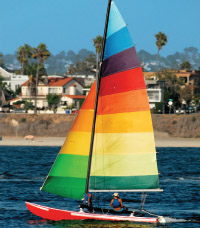 San Diego thrives in its year-round business of importing sunshine and exporting smiles. Home to an authorized Free Trade Zone, excellent port and the most heavily traded border in the world, there’s nothing not to love about doing business in “America’s Finest City.” Yet it’s the quality of life that we admire most. San Diego’s weather has been ranked as best in the nation and second in the world—meaning plenty of perfect days for taking in a Chargers or Padres game. According to San Diego’s Economic Development Division, the city has three regional parks, 190 community parks, seven open-space parks, 26 shoreline parks, and 25 miles of ocean and bay beaches. It’s all here—Sea World, Legoland, the San Diego Zoo and San Diego Wild Animal Park, shopping, dining, museums, and surfing. San Diego remains in the top 10 of our nation’s safest cities despite a population of 1.3 million. There are more than 25 hospitals, proximity to dozens of colleges and universities and 34 libraries. –Patrick Dooley
San Diego thrives in its year-round business of importing sunshine and exporting smiles. Home to an authorized Free Trade Zone, excellent port and the most heavily traded border in the world, there’s nothing not to love about doing business in “America’s Finest City.” Yet it’s the quality of life that we admire most. San Diego’s weather has been ranked as best in the nation and second in the world—meaning plenty of perfect days for taking in a Chargers or Padres game. According to San Diego’s Economic Development Division, the city has three regional parks, 190 community parks, seven open-space parks, 26 shoreline parks, and 25 miles of ocean and bay beaches. It’s all here—Sea World, Legoland, the San Diego Zoo and San Diego Wild Animal Park, shopping, dining, museums, and surfing. San Diego remains in the top 10 of our nation’s safest cities despite a population of 1.3 million. There are more than 25 hospitals, proximity to dozens of colleges and universities and 34 libraries. –Patrick Dooley
18. Atlanta, Georgia
Atlanta-Sandy Springs-Marietta, GA
$15 billion | Canada, Mexico, Singapore | Transportation Equipment, Computer and Electronic Products, Machinery
High energy meets Southern hospitality in this booming metropolis that hosted 10,320 Olympians in 1996. Busy Hartsfield International Airport, three interstates and connections to Savannah’s port brought the athletes in—and they sent $15 billion of exports out in 2010. With a low cost of doing business and a culture that spans from upscale Buckhead boutiques to the Varsity’s gut-busting chili dogs, Atlanta’s hard to beat as headquarters for an international exporter. –Marlene Piturro
19. New Orleans, Louisiana
New Orleans-Metairie-Kenner, LA
$14 billion | China, Singapore, the Netherlands | Petroleum and Coal Products, Crop Production, Food and Kindred Products
In one of history’s great international trade deals, Thomas Jefferson bought (most of) Louisiana (and much more) from Napoleon in 1803 for $11.25 million and cancellation of $18 million in debts, securing access to the port of New Orleans and usage of the Mississippi River. Over 200 years later, New Orleans is a top American exporter, and one of the fastest-growing for merchandise exports between 2009 and 2010 with growth of over 38 percent. –Patrick Dooley
20. Pittsburgh, Pennsylvania
Pittsburgh, PA
$12.2 billion | Canada, China, Brazil | Mining (except Oil and Gas), Primary Metal Manufacturing, Misc. Manufactured Commodities
Pittsburgh is truly one of the recent feel-good American export stories, having increased merchandise exports by 46 percent between 2009 and 2010. This is all the more impressive considering the Steel City no longer deals in steel. In fact, there is not a single steel mill in the city itself. Its redirection and recovery are due to a wide-ranging economic sector that spans from mining to technology, and finds major trade partners in Asia, Europe, South America and Canada. –Steve Lowery
21. St. Louis, Missouri
St. Louis, MO-IL
$11.2 billion | Canada, China, Mexico | Chemicals, Transportation Equipment, Food and Kindred Products
Mark Twain’s storied river town (now more than 2.8 million residents strong) earned its reputation as a central Midwestern hub on the Mississippi River. It continues to be a logistics haven with great water access. Chemicals ($2.4 billion) followed by transportation equipment ($1.3 billion) are St. Louis’ leading exports. Top export destinations are Canada ($1.8 billion), China ($1.3 billion) and Mexico ($1.1 billion). – Mary Shacklett
22. Peoria, Illinois
Peoria, IL
$11.1 billion | Chile, Canada, Brazil | Machinery, Fabricated Metal Products, Chemicals
This All-American City’s exports grew 42 percent from 2009 to 2010, boosted by being the nation’s No. 1 exporter of heavy machinery with a value of $8.4 billion shipped, or 76 percent of its total exports. Although battered by Illinois’ budget troubles and tax hikes, Peoria’s Heartland Partnership has answered with TransPORT, a 95-mile transport hub along the Illinois River. City amenities, hiking trails, wineries, paddleboats and a Christmas Festival of Lights make life in the Heartland go down easy. –Marlene Piturro
23. Washington, D.C.
Washington, Alexandria, Arlington, DC-VA-MD-WV
$11.1 billion | U.K., Singapore, Taiwan | Transportation Equipment, Computer and Electronic Products, Fabricated Metal Products
The metro area surrounding the nation’s capital boasts more than 5.5 million residents and supports major export activity in transportation equipment ($3.4 billion), computer and electronic products ($2.4 billion), fabricated metal products ($1.3 billion) and chemicals ($1.3 billion). The area is an East Coast port with strong air, sea and rail/trucking access. The U.K. is a major export market ($1.1 billion). A surprise export market is Singapore ($1 billion), a Pacific port. –Mary Shacklett
Best Logistics Infrastructure
24. Memphis, Tennessee
Memphis, TN-MS-AR
$11.1 billion | Canada, Mexico, China | Misc. Manufactured Products, Computer and Electronic Products, Paper
 Three interstate highways, two major large-volume railroad crossings at the Mississippi River—with freight running both east-west and north-south—the second-busiest inland port in the U.S., plus four railroad and two highway bridges connecting adjacent states across the Great Mississippi, all amount to Memphis as our pick for Best Logistics Infrastructure. There’s a reason FedEx established its global “Super Hub” at Memphis’ International Airport. Freight lines running through Memphis include BNSF, Union Pacific, CSX and Norfolk Southern, connecting such major cities as Dallas, Houston, Chicago, St. Louis and Indianapolis. Though it’s well connected for railway, it was the city’s natural high position along the Mississippi that established it as an economic force, free of flood concerns. Memphis aptly took its name from an Egyptian capital along the Nile River when it was founded in 1819 in part by “Old Hickory” himself, Andrew Jackson. At various points in its history, Memphis has been the world’s leading market for cotton, hardwood lumber and, believe it or not, mules. –Patrick Dooley
Three interstate highways, two major large-volume railroad crossings at the Mississippi River—with freight running both east-west and north-south—the second-busiest inland port in the U.S., plus four railroad and two highway bridges connecting adjacent states across the Great Mississippi, all amount to Memphis as our pick for Best Logistics Infrastructure. There’s a reason FedEx established its global “Super Hub” at Memphis’ International Airport. Freight lines running through Memphis include BNSF, Union Pacific, CSX and Norfolk Southern, connecting such major cities as Dallas, Houston, Chicago, St. Louis and Indianapolis. Though it’s well connected for railway, it was the city’s natural high position along the Mississippi that established it as an economic force, free of flood concerns. Memphis aptly took its name from an Egyptian capital along the Nile River when it was founded in 1819 in part by “Old Hickory” himself, Andrew Jackson. At various points in its history, Memphis has been the world’s leading market for cotton, hardwood lumber and, believe it or not, mules. –Patrick Dooley
25. Salt Lake City, Utah
Salt Lake City, UT
$10.7 billion | India, Hong Kong, Canada | Primary Metal Manufacturing, Computer and Electronic Products, Transportation Equipment
With its proximity to steel resources, there’s little surprise that Salt Lake City’s top export is metal-related. Chemical products rank fifth on the city’s list of exports, no doubt led by its sole Fortune 500 company, Huntsman Corporation (now famous for its heir, Jon Huntsman Jr., himself having been exported to China on diplomatic duty). SLC was another of America’s fastest-growing exporters between 2009 and 2010, enjoying a 35 percent boom during that period. –Patrick Dooley
26. El Paso, Texas
El Paso, TX
$10.3 billion | Mexico, Brazil, Honduras | Computer and Electronic Products, Electrical Equipment, Primary Metal Manufacturing
Given its location on the Mexican border, it’s not surprising that El Paso’s largest trade partner is Mexico by a wide margin. The $7.9 billion of business the city does with its neighbor to the south makes up 77 percent of its total exports. Fun fact: Due to Texas’ size, El Paso is actually closer to state capitals in four other states—Arizona (Phoenix), New Mexico (Santa Fe), Chihuahua (Chihuahua) and Sonora (Hermosillo)—than it is to the Texan capital of Austin. –Steve Lowery
27. Cleveland, Ohio
Cleveland-Elyria-Mentor, OH
$10.3 billion | Canada, Mexico, China | Chemicals, Machinery, Computer and Electronic Products
It should be counted as an achievement that Cleveland’s third largest export category belongs to computer and electronic products, given the city’s focus on attracting tech companies and partnerships. Cleveland State University has also worked to build this sector by helping their research get into the hands of Cleveland-based companies, and even hiring a vice president for Economic Development to expand the local economy with the help of CSU’s resources. –Patrick Dooley
King of the Hill
28. Indianapolis, Indiana
Indianapolis-Carmel, IN
$9.4 billion | Canada, Germany, Mexico | Chemicals, Transportation, Computer and Electronic Products
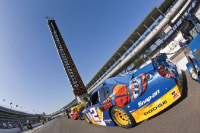 Indianapolis is our pick for the King of the Hill due to its strong showing in all categories. There’s a reason the largest Indianapolis employment sector is manufacturing. Logistically, there’s plenty of access to the worldwide marketplace. Indianapolis International Airport is a registered Free Trade Zone, and the city claims three ports, five rail lines including Norfolk Southern and CSX, and five major interstate highways. Indianapolis can also claim the lowest use and sales tax in the Midwest and competitive utility rates. Dozens of colleges are within a few hours—Purdue, Ball State, Butler (and many others) are in town, and Notre Dame is in state with Mendoza College of Business, ranked No. 1 by Bloomberg Business as Best Undergraduate Business School for three consecutive years (Go Irish!). It’s also a great place to live, with four distinctly beautiful seasons, several museums, theaters, parks, the Indianapolis Zoo, the Indianapolis Motor Speedway, Pacers and Colts—all helping the Circle City rank among America’s best for our nation’s exporters. –Patrick Dooley
Indianapolis is our pick for the King of the Hill due to its strong showing in all categories. There’s a reason the largest Indianapolis employment sector is manufacturing. Logistically, there’s plenty of access to the worldwide marketplace. Indianapolis International Airport is a registered Free Trade Zone, and the city claims three ports, five rail lines including Norfolk Southern and CSX, and five major interstate highways. Indianapolis can also claim the lowest use and sales tax in the Midwest and competitive utility rates. Dozens of colleges are within a few hours—Purdue, Ball State, Butler (and many others) are in town, and Notre Dame is in state with Mendoza College of Business, ranked No. 1 by Bloomberg Business as Best Undergraduate Business School for three consecutive years (Go Irish!). It’s also a great place to live, with four distinctly beautiful seasons, several museums, theaters, parks, the Indianapolis Zoo, the Indianapolis Motor Speedway, Pacers and Colts—all helping the Circle City rank among America’s best for our nation’s exporters. –Patrick Dooley
29. Phoenix, Arizona
Phoenix-Mesa-Scottsdale, AZ
$9.3 billion | Canada, Mexico, China | Computer and Electronic Products, Transportation Equipment, Machinery
Seven Fortune 500 companies hail from Phoenix, with the electronics corporation Avnet helping to keep computer and electronic products the city’s leading export. Phoenix is also home to one of Intel’s largest sites, employing some 10,000 in the chip manufacturing business. The city also affords exporters quick access to Sky Harbor International Airport, the 10th busiest in the United States, and 24th in the world. –Patrick Dooley
30. Bridgeport, Connecticut
Bridgeport-Stamford-Norwalk, CT
$9.3 billion | China, Canada, Mexico | Chemicals, Transportation Equipment, Computer and Electronic Products
Claiming 46.9 percent of Connecticut’s exports, the Bridgeport metro area sends $1.8 billion worth of chemicals, $1.3 billion in transportation equipment and $677 million in computers and electronics to the world. All three cities access I-95, the 1,925 mile East Coast highway spanning Maine to Florida. The cities also hug the Long Island Sound, offering maritime diversions such as Norwalk’s Aquarium, tall ships and the annual Oyster Festival. –Marlene Piturro
Most Likely to Succeed
31. Austin, Texas
Austin-Round Rock, TX
$8.9 billion | Taiwan, China, Mexico | Computer and Electronic Products, Paper, Transportation Equipment
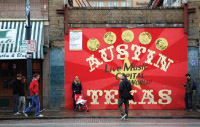 Some sober advice: When it comes to business-friendliness, don’t mess with Texas. Austin is our pick for Most Likely to Succeed because of its low-tax structure, key incentives and record for growth. Texas has no corporate income tax or individual income tax, and businesses receive tax breaks both for hiring and providing healthcare. “Economically distressed” areas receive some measure of tax refund, and tax exemptions are available for manufacturers, according to the Texas Economic Development Division. The Milken Institute ranked Austin third among America’s 200 largest cities in 2011 for job growth, and 14th for wages and salary growth over a five-year period. Forbes also ranked Austin the No. 1 metropolitan area among all big cities for jobs in 2012. Austin’s tech boom competes with Silicon Valley’s, and the area offers a lower cost of living. The sector attracts bright young minds who love Austin’s eclectic downtown area and one of America’s largest music festivals, SXSW. It’s what you’d expect from the Live Music Capital of the World. –Patrick Dooley
Some sober advice: When it comes to business-friendliness, don’t mess with Texas. Austin is our pick for Most Likely to Succeed because of its low-tax structure, key incentives and record for growth. Texas has no corporate income tax or individual income tax, and businesses receive tax breaks both for hiring and providing healthcare. “Economically distressed” areas receive some measure of tax refund, and tax exemptions are available for manufacturers, according to the Texas Economic Development Division. The Milken Institute ranked Austin third among America’s 200 largest cities in 2011 for job growth, and 14th for wages and salary growth over a five-year period. Forbes also ranked Austin the No. 1 metropolitan area among all big cities for jobs in 2012. Austin’s tech boom competes with Silicon Valley’s, and the area offers a lower cost of living. The sector attracts bright young minds who love Austin’s eclectic downtown area and one of America’s largest music festivals, SXSW. It’s what you’d expect from the Live Music Capital of the World. –Patrick Dooley
Best-Kept Secret
32. Greenville, South Carolina
Greenville-Mauldin-Easley, SC
$8.7 billion | China, Mexico, U.K. | Machinery, Plastics and Rubber Products, Computer and Electronic Products
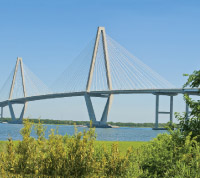 Is Greenville really the best kept secret? Well, sure. A quick run down most of the top 50 metro areas finds many of the usual suspects, and of the pleasant surprises, we think this South Carolina city sits atop the heap in attractiveness for a manufacturer. Plenty of universities are within proximity, most notably Clemson and the University of South Carolina, each with strong MBA programs. Shippers have access to three interstate highways and three freight lines, including CSX and Norfolk Southern. There are five ports that can be reached within hours—Port Charleston, Port of Savannah, Port Royal, Port of Georgetown and Port of Wilmington. The city provides special assistance for shippers, including a manufacturer’s roundtable that serves to plug members into a support community. The local chamber offers a variety of helpful reports and surveys, complimentary Certificates of Origin for exporters shipping to applicable countries, and other discounted programs for talent recruitment and leadership development. –Patrick Dooley
Is Greenville really the best kept secret? Well, sure. A quick run down most of the top 50 metro areas finds many of the usual suspects, and of the pleasant surprises, we think this South Carolina city sits atop the heap in attractiveness for a manufacturer. Plenty of universities are within proximity, most notably Clemson and the University of South Carolina, each with strong MBA programs. Shippers have access to three interstate highways and three freight lines, including CSX and Norfolk Southern. There are five ports that can be reached within hours—Port Charleston, Port of Savannah, Port Royal, Port of Georgetown and Port of Wilmington. The city provides special assistance for shippers, including a manufacturer’s roundtable that serves to plug members into a support community. The local chamber offers a variety of helpful reports and surveys, complimentary Certificates of Origin for exporters shipping to applicable countries, and other discounted programs for talent recruitment and leadership development. –Patrick Dooley
33. Hartford, Connecticut
Hartford-West Hartford-East Hartford, CT
$7.9 billion | Germany, Canada, China | Transportation Equipment, Electrical Equipment, Fabricated Metal Products
As you might expect of a city founded in 1637, Hartford has gone through its share of economic incarnations. Best known as a center for the insurance industry, Hartford holds its own in such palpable industries as transportation and electrical equipment and metal products. It held its own so well that, according to the Brookings Institute, Hartford has the highest GDP per capita in the world at $75,086. –Steve Lowery
Best Incentives
34. Milwaukee, Wisconsin
Milwaukee-Waukesha-West Allis, WI
Canada, Mexico, China | Machinery, Computer and Electronic Products, Transportation Equipment
 Milwaukee is our pick for Best Incentives because it caters to new start-ups and manufacturers, and because start-ups are our pick for Most Likely to Search For Best Incentives. Entrepreneur magazine ranked Milwaukee as one of the “hottest” urban areas for entrepreneurs, and as Choose Milwaukee points out, 85 percent of the area’s businesses have fewer than 25 employees. Additionally, the BizStarts Milwaukee program helps support new start-ups with such necessities as early-stage funding. To a large degree, Milwaukee’s shippers benefit from Wisconsin’s state-level commitment to manufacturing. America’s Dairyland provides various tax exemptions for manufacturing machinery, equipment and other materials, and tax credits and incentives are awarded for relocation, job creation, dairy manufacturing and research expenditures. The state has about a dozen business programs aimed at helping businesses get started; among them are the Technology Development Fund, Industrial Revenue Bonds and “BEST,” a program which helps recoup employee training costs. –Patrick Dooley
Milwaukee is our pick for Best Incentives because it caters to new start-ups and manufacturers, and because start-ups are our pick for Most Likely to Search For Best Incentives. Entrepreneur magazine ranked Milwaukee as one of the “hottest” urban areas for entrepreneurs, and as Choose Milwaukee points out, 85 percent of the area’s businesses have fewer than 25 employees. Additionally, the BizStarts Milwaukee program helps support new start-ups with such necessities as early-stage funding. To a large degree, Milwaukee’s shippers benefit from Wisconsin’s state-level commitment to manufacturing. America’s Dairyland provides various tax exemptions for manufacturing machinery, equipment and other materials, and tax credits and incentives are awarded for relocation, job creation, dairy manufacturing and research expenditures. The state has about a dozen business programs aimed at helping businesses get started; among them are the Technology Development Fund, Industrial Revenue Bonds and “BEST,” a program which helps recoup employee training costs. –Patrick Dooley
35. Kansas City, Missouri
Kansas City, MO-KS
$7.4 billion | Canada, Mexico, China | Crop Production, Transportation Equipment, Computer and Electronic Products
Deep in the Midwest farm belt, Kansas City’s leading export is crop products ($2.3 billion), followed by transportation equipment ($2 billion). Its leading export customer is Canada ($2.5 billion). Kansas City is also home to the Negro League Hall of Fame and to some of the best steakhouses in the country. It is located on Interstates 70 and 35, making east-west and north-south access easy. KC is also a major rail hub that hosts an international airport. –Mary Shacklett
36. Tampa, Florida
Tampa-St. Petersburg-Clearwater, FL
$6.6 billion | Mexico, Canada, Brazil | Computer and Electronic Products, Chemicals, Machinery
With St. Pete’s beach voted No. 1 by travelers to Florida’s sunny Gulf Coast, the Greater Tampa area naturally attracts exporters. Boasting $6.6 billion in exports, Tampa’s metro area has easy market access via air, sea and interstates. Close to South America, 50 percent of its exports flow to NAFTA and CAFTA countries. Tampa’s Ybor City, with its historical Cuban district, is the place for a Cuban sandwich—spicy meats, Swiss cheese and pickles. Caramba! –Marlene Piturro
37. San Antonio, Texas
San Antonio, TX
$6.4 billion | Mexico, Canada, Brazil | Transportation Equipment, Machinery, Computer and Electronic Products
Just the name “San Antonio” conjures images of rough men herding cattle. We probably have the old Pace Picante sauce commercials to blame (“This stuff’s made in… New York City!”), but it’s little wonder that this Texas city is one of the nation’s top exporters of leather and allied products—and, we assume, salsa. More surprisingly, San Antonio is one of the few Top 50 U.S. Cities for Global Trade that can count Brazil among its top three export markets. Its port has more than 7.7 million square feet for its customer population, with a large number of aerospace companies such as Boeing and Lockheed Martin. –Patrick Dooley
38. Riverside, California
Riverside-San Bernardino-Ontario, CA
$6.2 billion | Canada, Mexico, Japan | Misc. Manufactured Commodities, Computer and Electronic Products, Transportation Equipment
Riverside has been very aggressive in its pursuit of international trade. In fact, of the county’s 28 cities, 20 are located in foreign trade zones (FTZ), which provide duty-free treatment to goods processed for foreign trade. A prime example of the FTZ’s benefit is illustrated by shoe manufacturer Skechers, which has a 1.8 million-square-foot headquarters and distribution center in Moreno Valley and stands to save more than $3 million each year by being located in a FTZ. –Steve Lowery
39. Louisville, Kentucky
Louisville, Jefferson County KY-IN
$6.2 billion | Canada, Mexico, China | Transportation Equipment, Chemicals, Computer and Electronic Products
Located in bluegrass and horse country (it is home to the Kentucky Derby), Louisville exports $1.6 billion of transportation equipment and $1.3 billion worth of chemicals, which makes up nearly half of all its exports. Canada is the leading trading partner ($2.4 billion), followed by Mexico ($522 million) and China ($356 million). Louisville is graced with excellent access to Great Lakes, the East Coast and southern ports. –Mary Shacklett
40. Providence, Rhode Island
Providence, New Bedford, Fall River, RI-MA
$5.8 billion | U.K., Canada, Switzerland
A Northeast U.S. seaport area with excellent logistics, the Providence metro area has a history of shipbuilding and exports $153 million of fishing, hunting and trapping gear annually. However, the leading export by far is manufactured metal (43 percent). The U.K. is the area’s leading export partner (37 percent) followed by Canada (13 percent).When logistics and manufacturing workers aren’t working, you might find them at the Newport Jazz Festival—a stone’s throw away in Newport, RI. –Mary Shacklett
41. Nashville, Tennessee
Nashville-Davidson-Murfreesboro-Franklin, TN
$5.7 billion | Canada, Mexico, Saudi Arabia | Transportation Equipment, Computer and Electronic Products, Electrical Equipment
The success of Nashville early in its existence was in large part due to its river and railroad access, and today the city enjoys the added benefit of a network of colleges and universities. Nashville experienced economic booms following the Civil War, in the 1970s, again in the 1990s, and remains an exporting force today via traditional products. Nashville is one of the nation’s top exporters of textiles and fabrics, plastics and rubber, printed matter, and forestry and logging. Classically American, we must say. –Patrick Dooley
42. Wichita, Kansas
Wichita, KS
$5.5 billion | Canada, Mexico, Brazil | Transportation Equipment, Chemicals, Food and Kindred Products
There are 21 aircraft manufacturers (including Boeing and Cessna) in Wichita and a wealth of aerospace engineering/manufacturing talent. It’s small wonder that $1.8 billion of Wichita’s exports are transportation equipment. Leading export markets are Brazil ($310 million) and the U.K. ($269 million). Proximate to the farm belt ($400 million in exports) and the oil fields ($53 million in exports), Wichita is also on the I-35 corridor. Wichita’s Kansas Aviation Museum showcases the area’s rich aviation history. –Mary Shacklett
Most Entrepreneurial
43. Charlotte, North Carolina
Charlotte-Gastonia-Rock Hill, NC-SC
$5.4 billion | Canada, Mexico, China | Machinery, Transportation Equipment, Chemicals
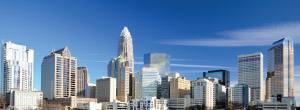 In the past decade, Charlotte has seen greater than 800 new firms established in a given year three times, according to a study by the Charlotte Chamber of Economic Development. The years between 2002 and 2011 accumulated nearly 7,000 new firms, with more than 57,000 created jobs. The Charlotte area makes a strong case for Best Incentives as well, with electric and gas utility discounts, fast-track permitting, a handful of available grants and plenty more. There’s great support for an entrepreneur, with the McColl School of Business Center for Entrepreneurial Leadership, CPCC Institute for Entrepreneurship and the Small Business & Technology Development Center each having a range of programs aimed at helping new start-ups and the next generation of business leaders. Assistance is also available for opening foreign markets through these and other organizations. –Patrick Dooley
In the past decade, Charlotte has seen greater than 800 new firms established in a given year three times, according to a study by the Charlotte Chamber of Economic Development. The years between 2002 and 2011 accumulated nearly 7,000 new firms, with more than 57,000 created jobs. The Charlotte area makes a strong case for Best Incentives as well, with electric and gas utility discounts, fast-track permitting, a handful of available grants and plenty more. There’s great support for an entrepreneur, with the McColl School of Business Center for Entrepreneurial Leadership, CPCC Institute for Entrepreneurship and the Small Business & Technology Development Center each having a range of programs aimed at helping new start-ups and the next generation of business leaders. Assistance is also available for opening foreign markets through these and other organizations. –Patrick Dooley
44. Laredo, Texas
Laredo, TX
$5.3 billion | Mexico, Canada, the Netherlands | Computer and Electronic Products, Transportation Equipment, Food and Kindred Products
Few areas benefited as much from the passage of the NAFTA as Laredo. Not only do more than 91 percent of its exports go to NAFTA members, the huge majority of that heads toward neighbor Mexico. And Laredo benefits even when the goods aren’t its own; more than 47 percent of U.S. international trade headed for Mexico and more than 36 percent of Mexican international trade crosses through the Laredo port of entry. –Steve Lowery
45. Baltimore, Maryland
Baltimore-Towson, MD
$5.2 billion | Canada, Mexico, Japan | Transportation Equipment, Chemicals, Computer and Electronic Products
Home to the Baltimore Ravens and Edgar Allan Poe, the area until recently experienced tax and regulatory woes scarier than The Raven. However, the last two years showed double digit export growth and 40,000 direct new jobs. Transportation equipment valued at $1.1 billion, chemicals at $757 million, and computers and electronic equipment’s $709 million led the way in exports to Canada ($1.0 billion), Mexico ($341 million) and Japan ($204 million). For relaxation, visit Baltimore Harbor for its microbreweries and the best crab cakes anywhere. –Marlene Piturro
46. Rochester, New York
Rochester, NY
$5.1 billion | Canada, Mexico, China | Chemicals, Computer and Electronic Products, Machinery
This Erie Canal boomtown in New York’s Finger Lakes boasts big city culture courtesy of the Eastman School of Music, plentiful intellectual capital, strong high-tech job growth and affordable housing. Rochester’s exports account for 7 percent of New York’s total. Top trading partners are Canada at 23 percent, followed by Mexico’s 11 percent and China at 10 percent. Kick back at area wineries or visit the Rochester and Genessee Valley Railroad Museum for fun. –Marlene Piturro
47. Denver, Colorado
Denver, Aurora, CO
$5.0 billion | Canada, Mexico, China | Computer and Electronic Products, Machinery, Food and Kindred Products
Anyone who is observant of geography, or old reruns of Dynasty, knows that Denver’s proximity to the Rockies makes it a gold mine for, well, mines and petroleum and such. But even gold, silver and, yes, oil go through their booms and busts, leading the city to diversify so that such non-mountainous products as computer and electronic products ($526 million) and food and kindred products ($343 million) now rank as its major exports. –Steve Lowery
48. Davenport, Iowa
Davenport-Moline-Rock Island, IA-IL
$4.8 billion | Canada, Mexico, Brazil | Machinery, Transportation Equipment, Fabricated Metal Products
Straddling the mighty Mississippi River, the Davenport metro area spans two states. Davenport and Bettendorf in Iowa join with Illinois’ Moline and Rock Island to form the “Quad Cities.” Metro Davenport’s exports recently leapt 35 percent. Home to heavy agricultural machinery manufacturing, 76 percent of its exports ($3.6 billion) are machinery. For work and play, Davenport’s River Renaissance has a music history center, the Figge Art Museum and an agriculture-tech venture capital campus. –Marlene Piturro
49. Richmond, Virginia
Richmond, VA
$4.6 billion | Canada, China, Mexico | Chemicals, Paper, Mining (Except Oil and Gas)
With men like Thomas Jefferson, Patrick Henry and Robert E. Lee, perhaps Richmond’s greatest export has been History. Richmond is currently home to five Fortune 500 companies, and 11 Fortune 1000 companies. Interesting fact: 55 percent of America’s consumers are within a two-day truck drive of the city. It’s a testament to Richmond’s geographical strength that the city reclaimed its economic power after the British set it ablaze in 1781 and again when Union troops leveled it during the Civil War. –Patrick Dooley
50. Decatur, Illinois
Decatur, IL
(No details provided)
This may not be the largest metro area on the list—just 114,749—but Decatur has hosted its share of heavy hitters. Abraham Lincoln made Decatur his first Illinois home and location of his first political speech, and city was the original home of the Chicago Bears from 1919 to 1920. Both Lincoln and the Bears left to pursue further success. Fortunately for the local economy, such global powerhouses as Caterpillar and agricultural behemoth Archer Daniels Midland have stuck around. –Steve Lowery
Methodology
The Top 50 Cities for Global Trade methodology is a subjective and objective hybrid. There are two rankings incorporated into this report: superlative rankings and export volume rankings. The superlative rankings, such as Most Entrepreneurial City or Best Cost Structure, were chosen by the Global Trade editorial team. We analyzed a host of materials and reports, many of which were unique to one particular category. So while one could make the case that the superlative categories are in fact objective, subjectivity also played a role.
For example, many of the qualities that led us to name Charlotte as “Most Entrepreneurial” could have also been used to name Charlotte to another superlative category, hence the full disclosure that the superlative rankings are both subjective and objective in nature. But that’s what makes them fun reading. Can anyone really say that Miss Texas is more qualified to be Miss America over Miss Nebraska? In the end, the judges just have their opinions.
Regarding the rankings by export volume, we are calling this report the Top 50 Cities for Global Trade for ease of identification. The rankings are based on the export volumes of the greater metropolitan area surrounding the lead city. In some case the greater metropolitan area can encompass different counties, even different states.
Rankings are based on total export volume as compiled by the International Trade Administration, which lists a complete analysis of the methodology employed by the ITA on their website at http://www.trade.gov/mas/ian/metroreport/index.asp.




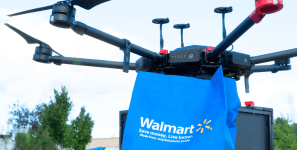
Nice sizing up of US Cities potential……and a positive shot in the arm for those citizens who do not know HOW POWERFUL THEIR CITES ARE….and CAN BE!!!
Thank you for giving us the best lists for our marketing class